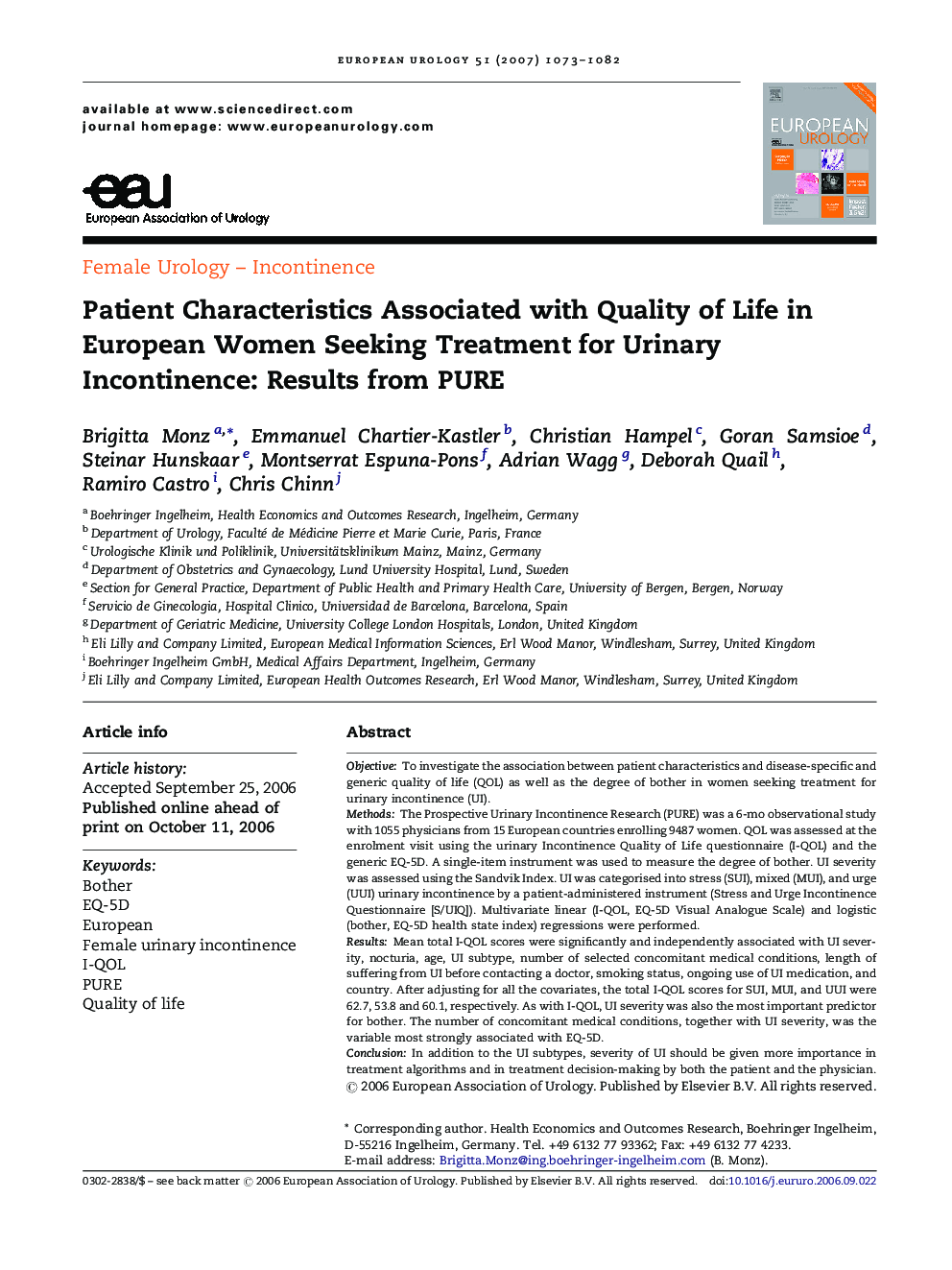| Article ID | Journal | Published Year | Pages | File Type |
|---|---|---|---|---|
| 3925572 | European Urology | 2007 | 10 Pages |
ObjectiveTo investigate the association between patient characteristics and disease-specific and generic quality of life (QOL) as well as the degree of bother in women seeking treatment for urinary incontinence (UI).MethodsThe Prospective Urinary Incontinence Research (PURE) was a 6-mo observational study with 1055 physicians from 15 European countries enrolling 9487 women. QOL was assessed at the enrolment visit using the urinary Incontinence Quality of Life questionnaire (I-QOL) and the generic EQ-5D. A single-item instrument was used to measure the degree of bother. UI severity was assessed using the Sandvik Index. UI was categorised into stress (SUI), mixed (MUI), and urge (UUI) urinary incontinence by a patient-administered instrument (Stress and Urge Incontinence Questionnaire [S/UIQ]). Multivariate linear (I-QOL, EQ-5D Visual Analogue Scale) and logistic (bother, EQ-5D health state index) regressions were performed.ResultsMean total I-QOL scores were significantly and independently associated with UI severity, nocturia, age, UI subtype, number of selected concomitant medical conditions, length of suffering from UI before contacting a doctor, smoking status, ongoing use of UI medication, and country. After adjusting for all the covariates, the total I-QOL scores for SUI, MUI, and UUI were 62.7, 53.8 and 60.1, respectively. As with I-QOL, UI severity was also the most important predictor for bother. The number of concomitant medical conditions, together with UI severity, was the variable most strongly associated with EQ-5D.ConclusionIn addition to the UI subtypes, severity of UI should be given more importance in treatment algorithms and in treatment decision-making by both the patient and the physician.
